In the barefoot shoe industry, we often hear the term “wide.” But that label alone doesn’t tell the whole story about shoe fit.
Different brands and models can be wide in different areas of the shoe—the forefoot, midfoot, heel, or anywhere in between!
Simply knowing that a shoe is “wide” doesn’t give us enough information about where that width is distributed and, more importantly, whether it’s in the places you need it.
In my reviews, I often discuss width subjectively, trying to convey where a shoe felt wider or narrower. But now, I’ve gone one step further and taken the actual measurements.
The results are eye-opening—they confirm and explain much of what I felt. Now, I’m excited to reveal those findings, showing why width in the right areas makes all the difference.
Which minimal running shoe is for you?
Take a quick 5-question quiz to identify the perfect minimal running shoe for your feet! You'll get both road and trail options based on your answers!
Let’s jump straight into the results.
I measured a variety of models and brands, from Altra to Vivobarefoot, and the trends are clear.
| Brand | Model | Size | Length (mm) | Forefoot Width (mm) | Midfoot Width (mm) | Heel Width (mm) |
|---|---|---|---|---|---|---|
| Altra | Superior 6 | US9 | 286 | 104 | 84 | 67 |
| Altra | Mont Blanc Carbon | US9 | 290 | 100 | 81 | 67 |
| Altra | Escalante 4 | US9 | 288 | 103 | 78 | 68 |
| Altra | Escalante Racer 2 | US9 | 288 | 104 | 78 | 69 |
| Bahe | Revive | UK8 | 288 | 107 | 87 | 71 |
| Freet | Feldom | EU43 | 288 | 106 | 91 | 77 |
| Freet | Calver | EU43 | 286 | 107 | 92 | 72 |
| Tolos | Archetype 2.0 | US9 | 280 | 106 | 84 | 71 |
| Vivobarefoot | Primus Trail II | EU42 | 283 | 107 | 91 | 77 |
| Vivobarefoot | Vivobiome | 3D Printed | 282 | 105 | 94 | 76 |
| Xero Shoes | Mesa Trail II | US9 | 274 | 104 | 89 | 71 |
| Xero Shoes | Speed Force II | US9.5 | 280 | 104 | 88 | 71 |
A few caveats.
- I took these numbers using a steel ruler and vernier calipers. I am human, so expect some variance.
- The shoe’s material thickness can add 1-2mm variation to the measurements
- The measurements are snapshots across the shoe. They don’t tell the whole story.
- Material choices can make a HUGE difference in shoe fit and feel. (think stiff vs. stretchy)
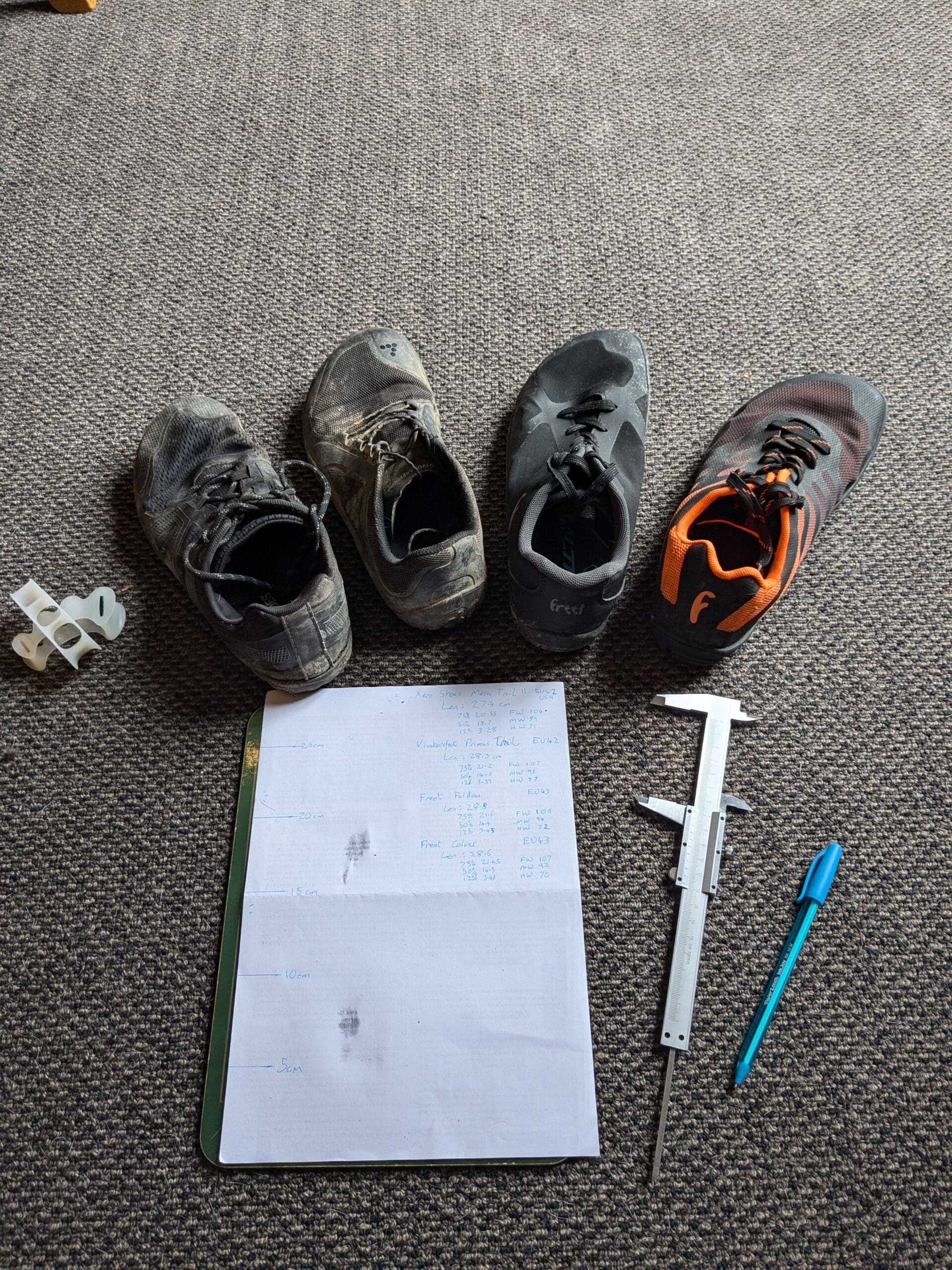
So what’s the widest shoe? 🙂
The Freet Calver. Clearly. If you have wide feet, just buy it, right?! 😆
Not so fast!! Because that’s not how shoe fit works!
First, let’s address the issue of why I have different sizes of shoes. Why not list all the sizes in US or EU sizing?
Quick answer. Because shoes aren’t made like that!
They are made based on a specific sizing standard, either US/EU/UK, and the companies then convert the original figures into the other measurement standards. For example, US men’s 9 is roughly EU42-ish. Note that I wrote “ish,” and that’s the whole problem: These conversions are not 100% accurate.
I’ve chosen the sizing that feels “best” for me, and this is how I build up my recommendations.
What are my takeaways?
- Freet are the widest across all the figures!
- Vivobarefoot is not that narrow!
- Xero Shoes are narrower in the forefoot BUT not in the midfoot.
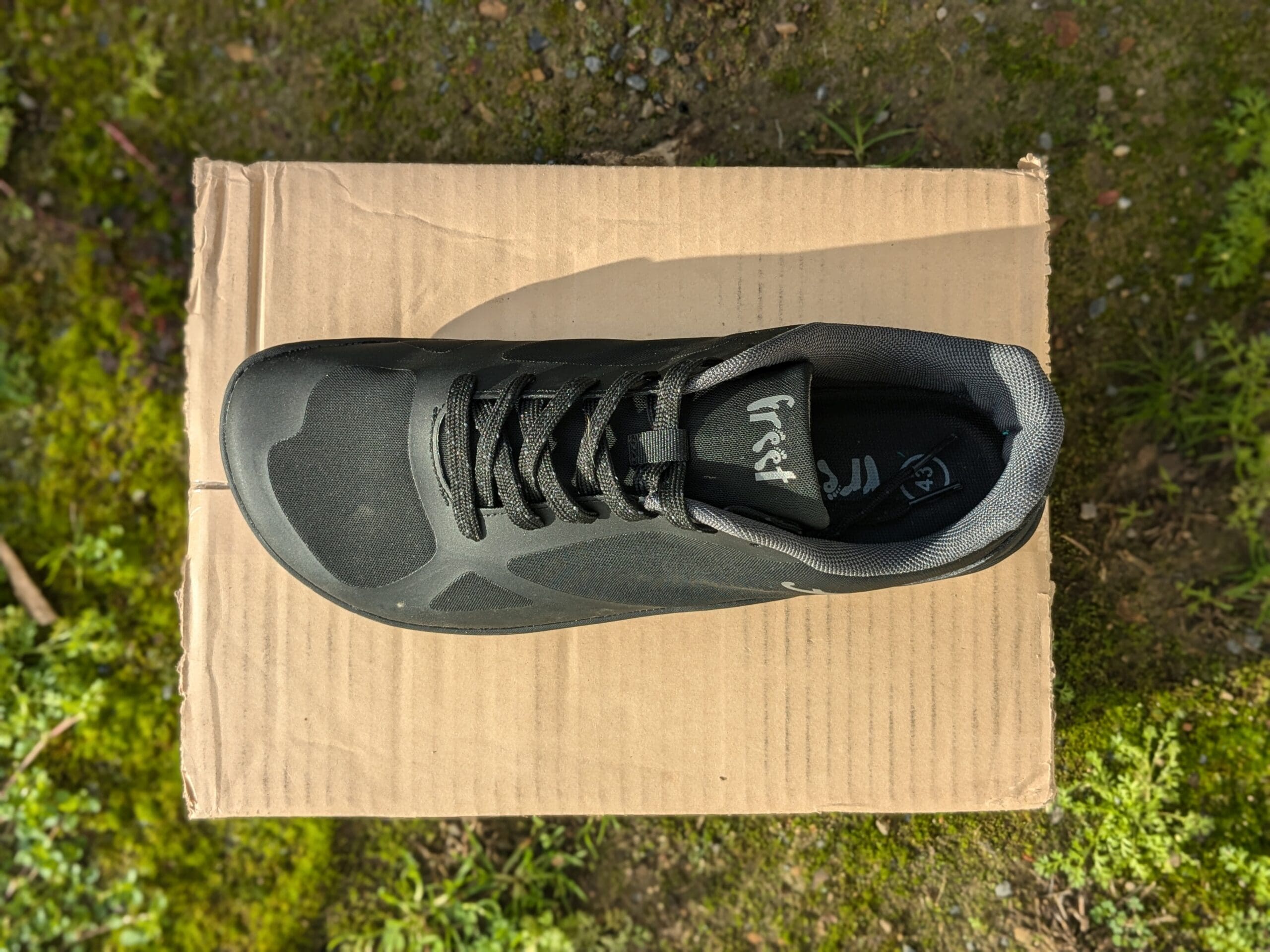
Subjectively, I’ve always mentioned that Freet shoes are wider in all areas, and the results back this up. This could potentially be because I chose an EU43, which works out to be longer than some of the other barefoot brands, but that’s not true across the board. Vivobarefoot EU42 is nearly as long as a Freet EU43, and Altras US9 (EU42.5) is roughly the same length as a Freet EU43.
With that, Freet shoes can be 14mm wider in the midfoot than Altras! That’s huge, and it’s likely why they feel so spacious.

We often hear that Vivobarefoot shoes are narrow. I’ve frequently argued that they’re only narrow in certain areas, but now I’m happy we have some data! They’re as wide as Freet offerings!
So why do they feel narrow to some?
There are a couple of reasons. First, the taper from the forefoot up through the little toe is aggressive. It often squeezes the toes of those with large little toe splays (not me).
Next, we have the material choice of Vivobarefoot. The Primus Trail and Primus Lite use stiff plastic-like materials, meaning there’s no give in the width. This can feel restrictive and give the feeling of being “narrow,” especially if the fit isn’t perfect. You’ll have a completely different experience if you choose the Knit options.
Lastly, Vivobarefoot options are normally shallow. Meaning there is not much depth over the fit, making the shoe feel tight. Some people mistake this for feeling too narrow. (If you have this feeling, take the insole out and try again)
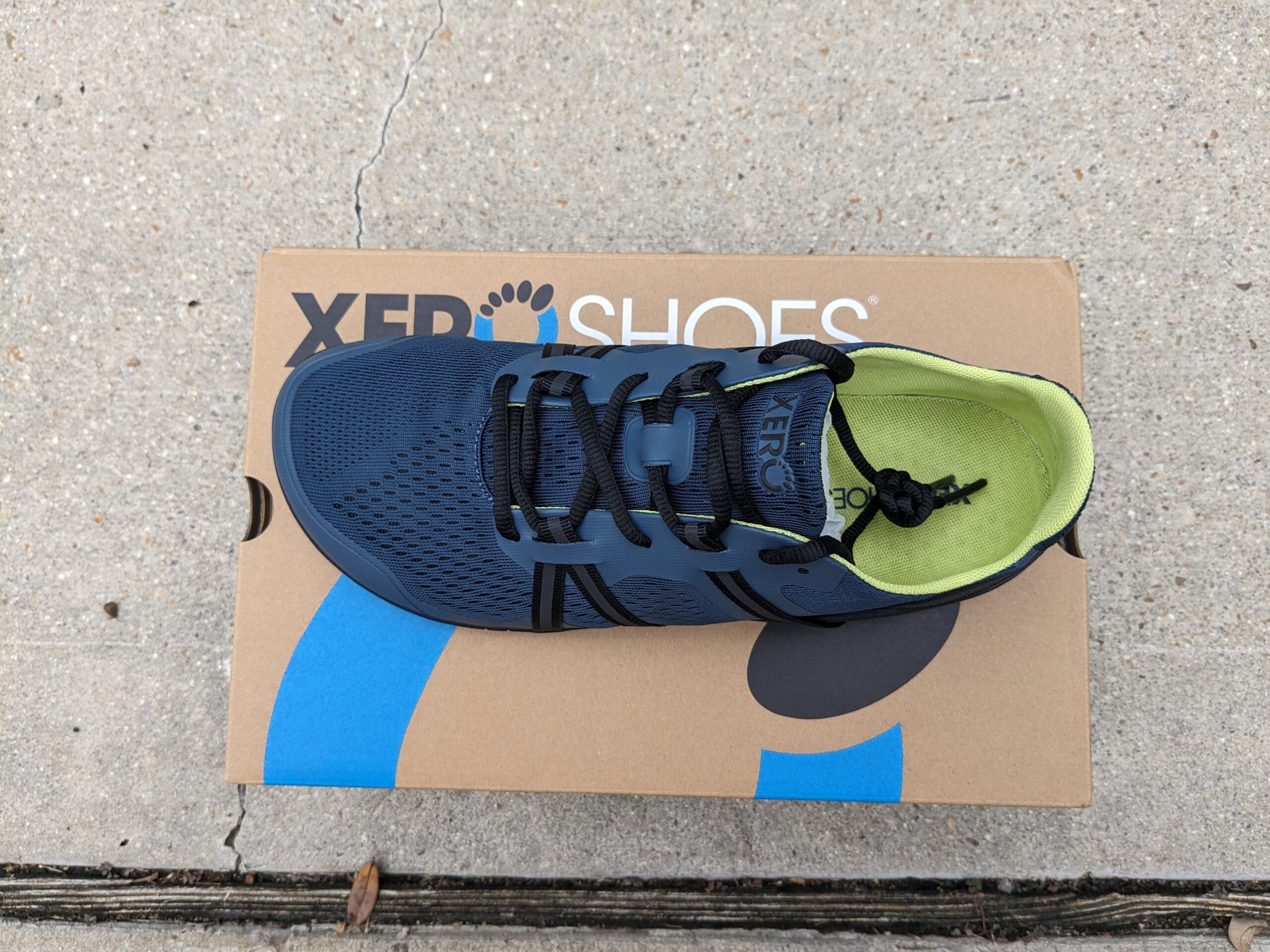
I can’t wear Xero Shoes; they’re too narrow. I hear this complaint from barefoot enthusiasts on the internet. Their argument may have some merit, but it’s more nuanced than this.
A more accurate statement would be Xero Shoes doesn’t offer enough room for toe splay due to the narrower forefoot.
As we can see, the midfoot and heel widths align with many other options. This is the exact reason I still wear Xero Shoes day in and day out!
One clear outcome from this Xero Shoes data is that they are short! Yet another reason why some may feel they’re narrow and tight. Sizing up ½ or even a full size from other brands will fix this issue and help with fit.
If you’ve been on Reddit or are part of barefoot Facebook groups, I’m sure you’ve seen the meme: “X brand is horrible; it’s not wide.” Or, “What brands are wide?”
Instead of simply saying “wide,” I will introduce three distinct parts of the shoe –the forefoot, the midfoot, and the heel– and explain why and when some folk need those areas to be “wider”.
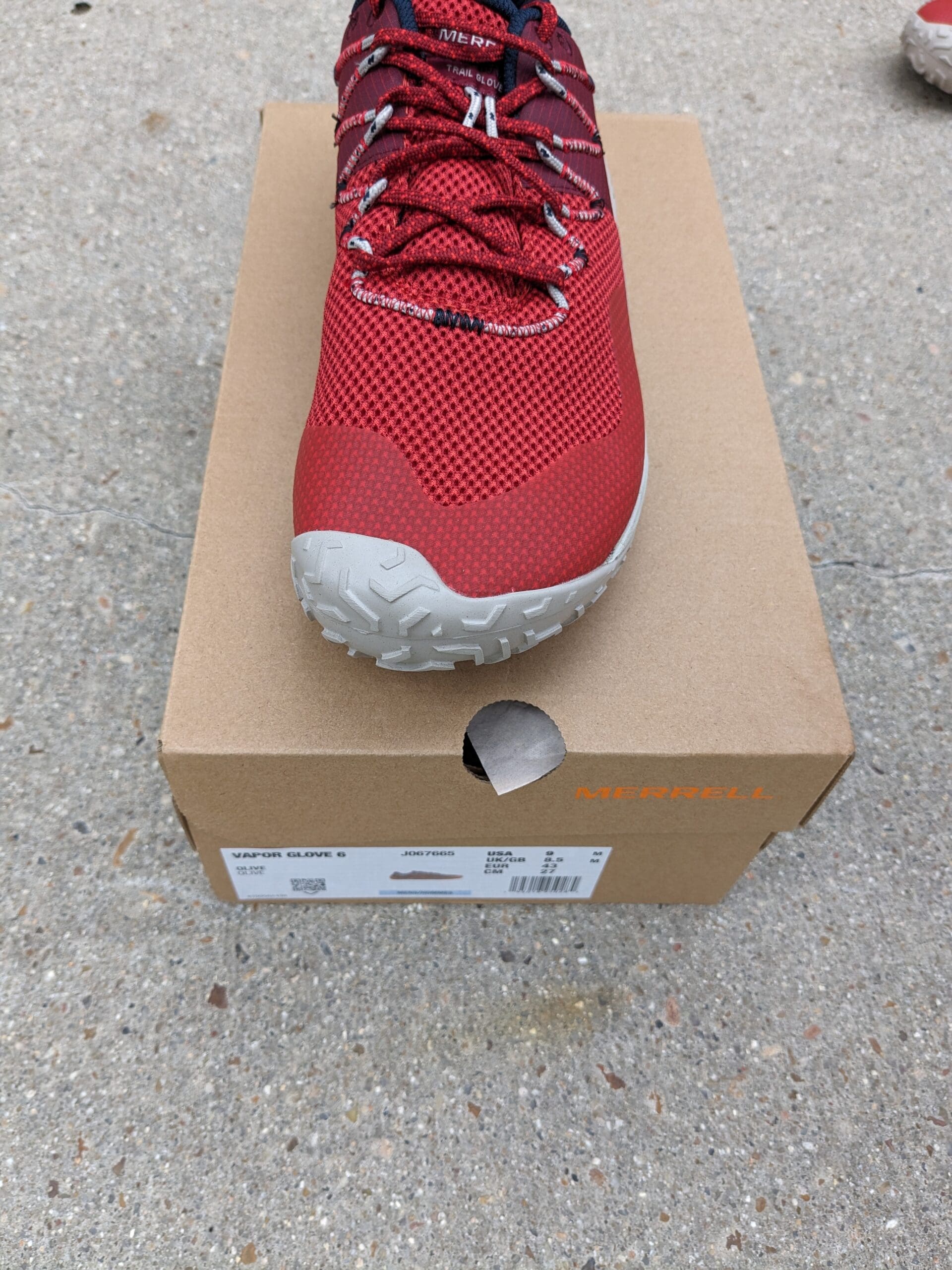
Forefoot Width: Room for Natural Toe Splay
The forefoot, where your toes sit, is the area that often needs the most room, especially for us barefoot enthusiasts. Natural toe splay—the ability for your toes to spread out when you walk or run—is critical for balance and comfort.
Forefoot width is normally measured at 75% of the length from the back of the shoe. This usually lands around the ball of the foot.
As you can guess, this measurement has further nuance, as this single-width measure doesn’t give you an idea of how aggressively a toe box tapers (rounds from the little or big toe). This is why conventional brands can sell “wide” versions of their shoes, which may offer more width around the ball of the foot, but it can still be detrimental to foot health, as the toes are squeezed together.

Midfoot Width: Some people have wider midfoots! …. ME
The midfoot, located between the arch and the ball of your foot, often requires a more snug fit to help the shoe feel secure on the foot.
However, if you have a wider midfoot, finding the right balance between a secure fit and comfort is a pain (literally).
Measured at 50% of the shoe’s length, this is where you often see the most variation across brands. Ironically, it is also the most overlooked by reviewers and consumers.
The shoes I’ve reviewed show a 16mm difference from the narrowest to the widest! Interestingly, the widest shoe was 3D printed for my foot. 🙂 Is it any wonder I find it hard to get shoes to fit?
That’s not the whole story with midfoot fit, though.
Material choice makes a huge difference here. A stretchy knit material will expand to your foot like a sock. However, the midfoot measurement is crucial when more solid plastic materials (that don’t expand to your midfoot) are chosen, like the Vivobarefoot Primus Trail.

Heel Width: Do you feel like you’re swimming in a shoe?
While the heel might not seem as critical, it plays a vital role in a secure fit.
If a shoe’s heel is too wide for your foot, you may experience your foot moving within the shoe, which can affect your gait and cause discomfort during longer activities.
On the other hand, a narrow fit can feel like your heel is being pushed up out the top of the shoe, leading to a poor heel lock.
It’s not often you can feel a huge amount of variation in this number, but it’s clear when the fit in this area isn’t quite optimal.
I highlighted this point in the Altra Lone Peak 8 review, where it felt like my heel was swimming around in the shoe. This may have also been due to the depth of the heel area, but this can often be fixed with different insoles, whereas an issue with the width is not solvable!
Each foot is unique, with lumps and bumps in different places, so no shoe shape fits all.
- A shoe that caters to a narrow foot shape might work well for some, but it can feel restrictive for others.
- A shoe wide in the midfoot works amazing for some, but it can feel like feet are swimming to others.
This is where understanding foot shape becomes crucial.
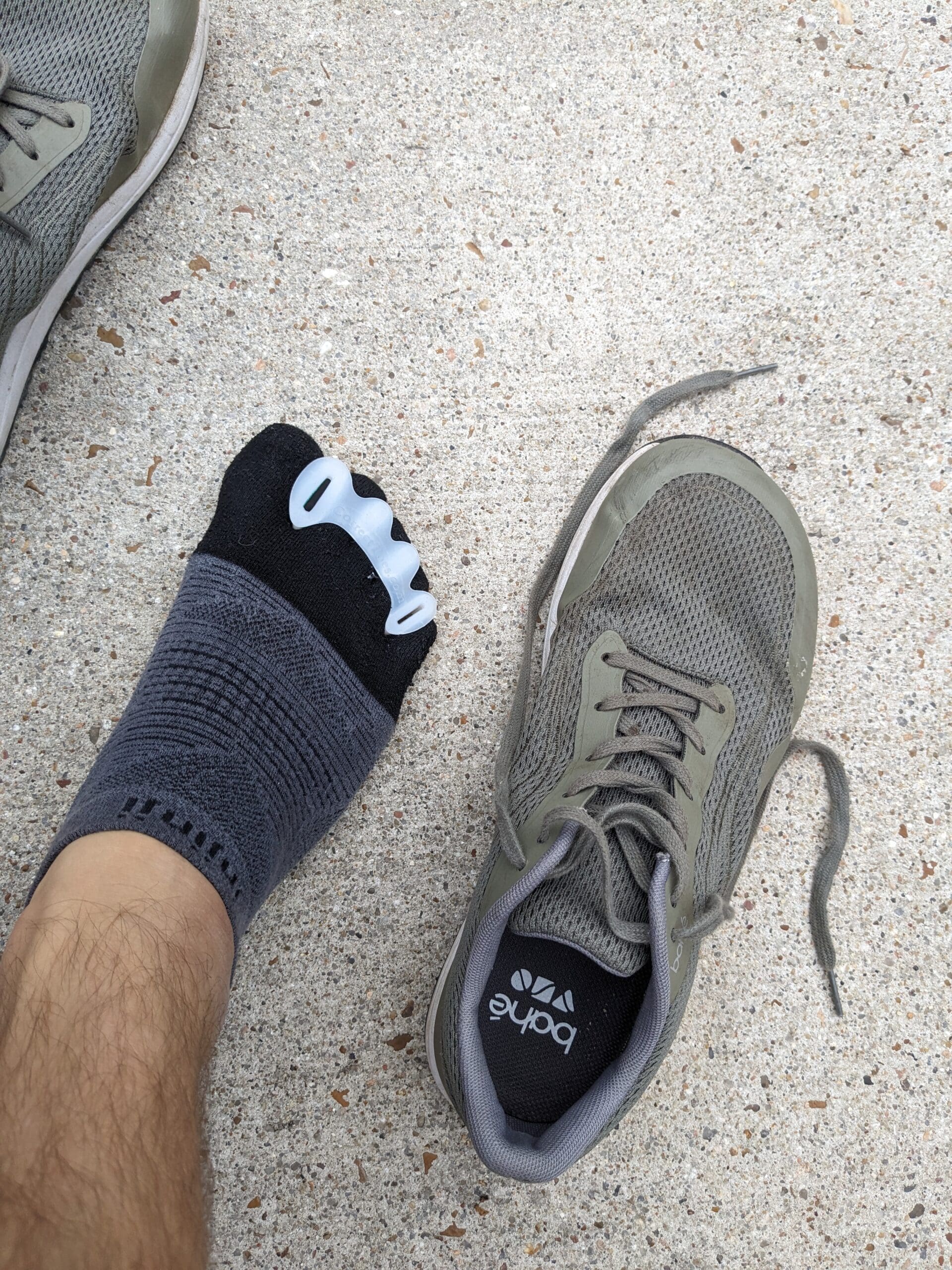
By measuring and analyzing the different parts of the shoe, I’ve found that it’s not just about how “wide” a shoe is overall—it’s about how well that width matches your specific foot shape. Brands like Altra often cater to a foot shape that provides a wide toe box but is often very narrow in the midfoot.
If you have an aggressive wedge shape to your foot, this kind of fit is perfect. But a fit like this can be problematic when you have more width in the midfoot (like me).
By paying closer attention to the shape and widths at different points of your foot, rather than just choosing shoes labeled as “wide,” you can ensure a better fit.
Now that we’ve explored why width placement matters and how shoe shape plays a crucial role, how do you choose the right shoe for your foot shape?
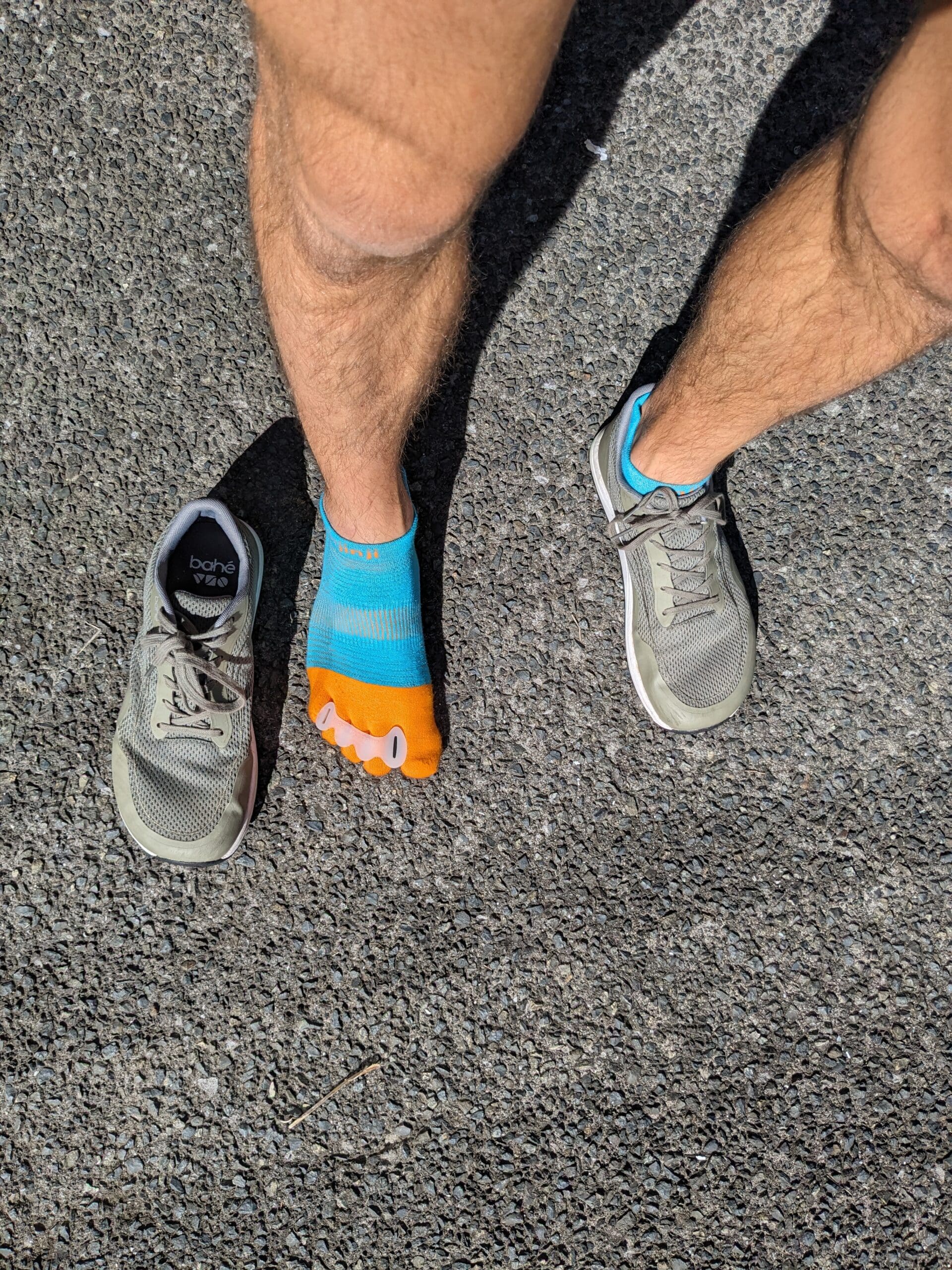
1. Identify Where You Need the Width
Start by looking at your foot shape.
Do your toes splay wide, or do you have a broader midfoot? Your heels may be wider than most.
Knowing which part of your foot needs the most space is the first step toward finding the right shoe.
For instance, if your toes need room to spread, look for shoes with a wide forefoot, like the Altra. But if your midfoot tends to feel cramped in shoes, brands like Freet with extra midfoot room might be better suited to you.
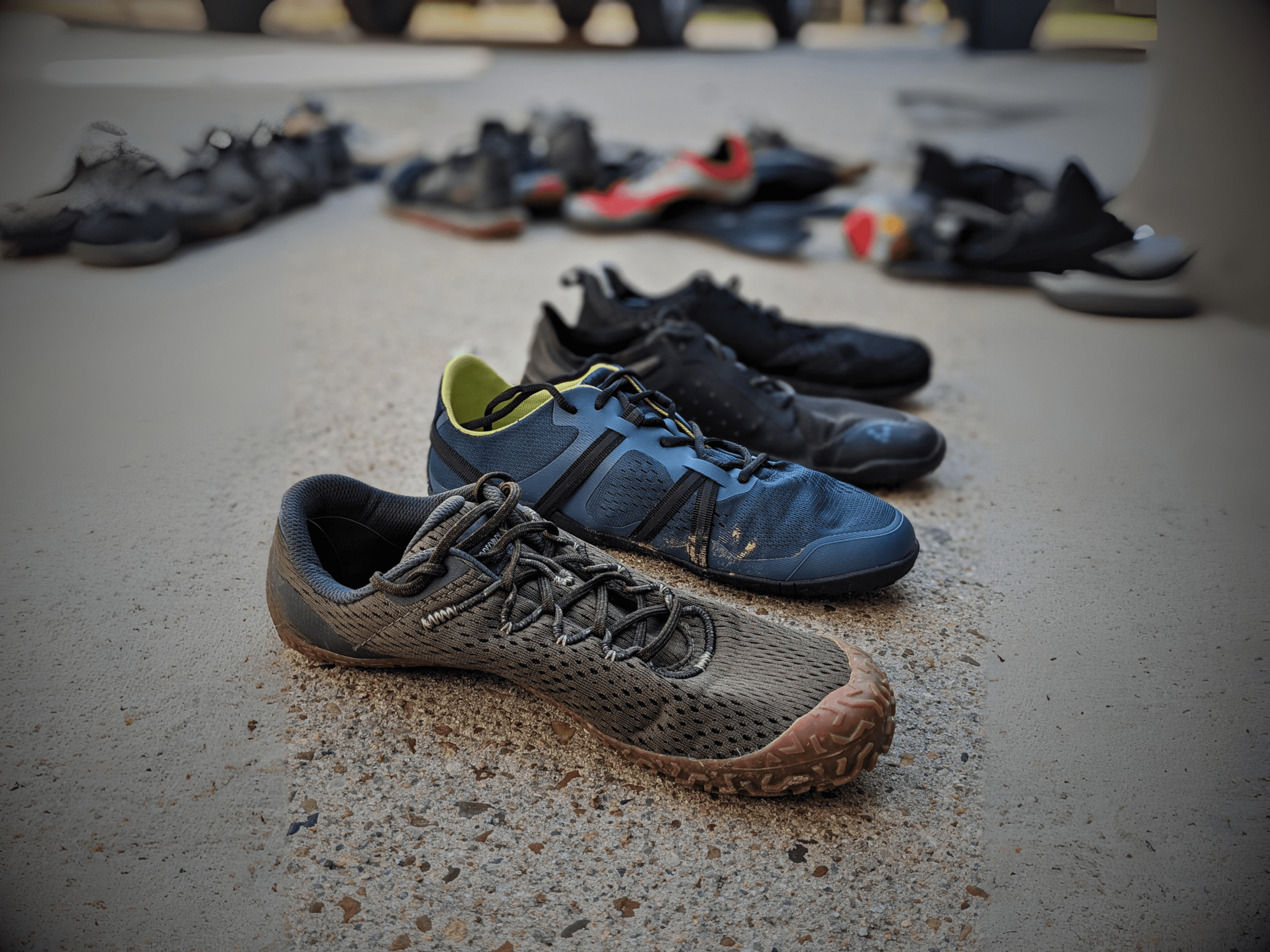
2. Try Different Brands and Models
Different brands excel in different areas of the foot. Brands like Freet and Vivobarefoot often provide more space in the forefoot but can vary significantly in the midfoot and heel.
Trying on various models will help you discover which brand’s shoe shape aligns with your foot. AND whereas differents models from the same brands tend to fit the same, it’s not always the case. (PSSST: Keep an eye on my reviews, and I’ll mention when things are different!)

3. Don’t Rely Solely on “Wide” Labels
Avoid falling into the “wide” trap!
We now know shoes are “wide” or “narrow” in different areas. What’s important is whether the width in different areas of the shoe works for you!

4. Measure Your Foot and Compare
One of the most effective ways to choose the right shoe is to measure your foot. Knowing your forefoot, midfoot, and heel dimensions can help you make more informed decisions.
Get a pen and paper, stand on the paper barefoot, and draw around your foot.
It’s often easier to see these width differences in 2D, but don’t ignore the 3D aspect! Shoes can also have different depths, which is important for shoe fit.
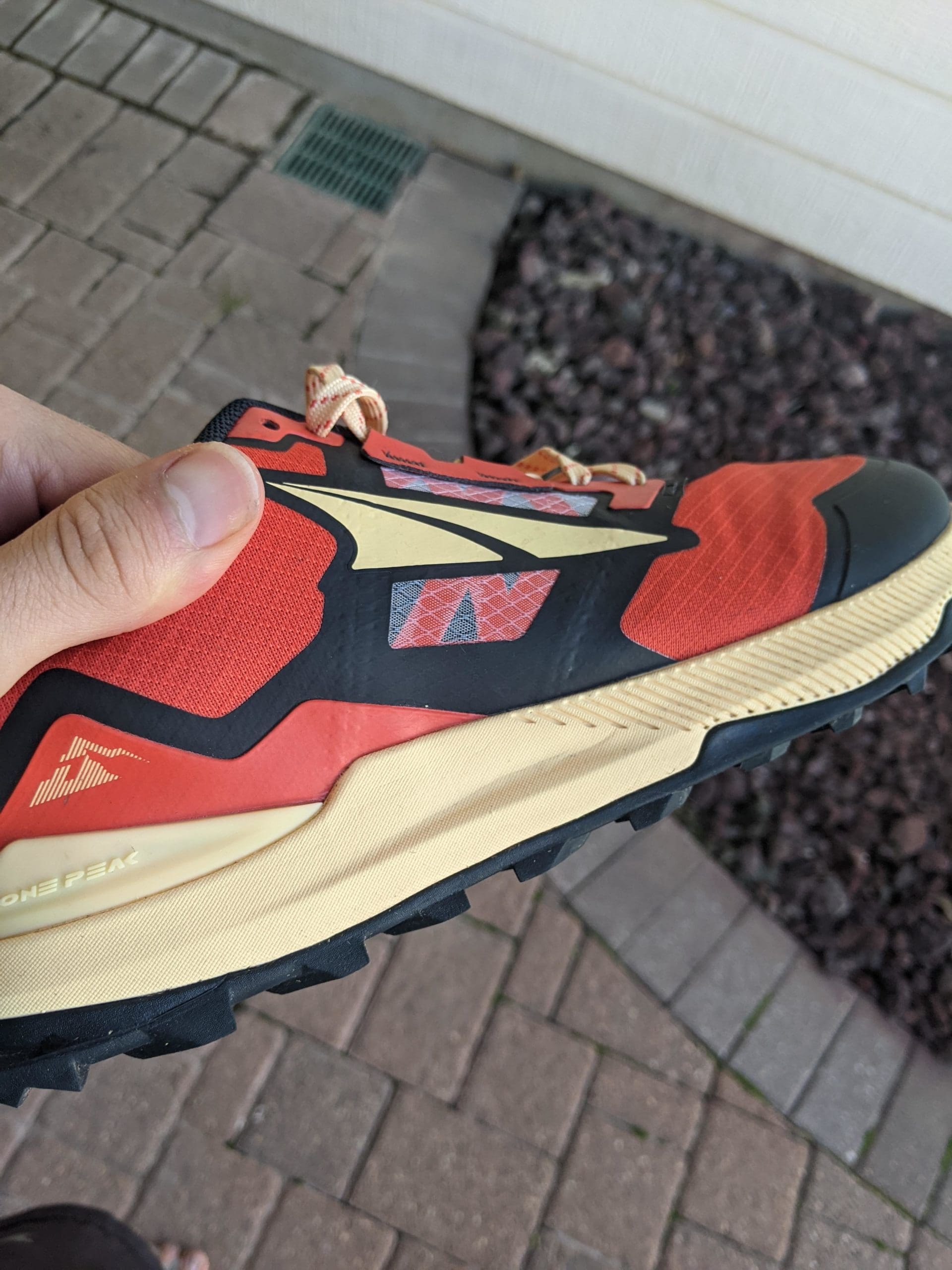
5. Listen to Your Feet
Lastly, trust your feet.
If a shoe feels tight in certain areas or causes discomfort during long runs or walks, it may not be the right fit for you—even if labeled as “wide.”
Take some time to adjust the lacing and switch out the insoles to see if you can improve the fit. And if not, don’t worry! The shoe is not for you!


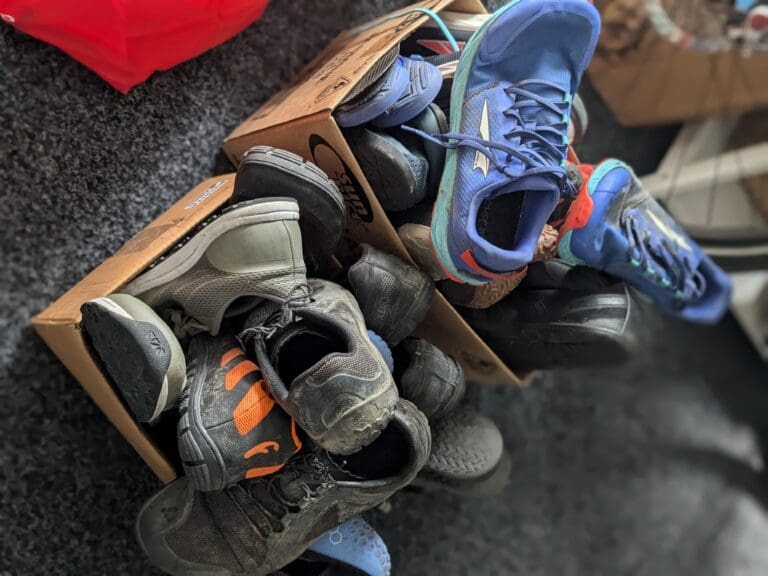
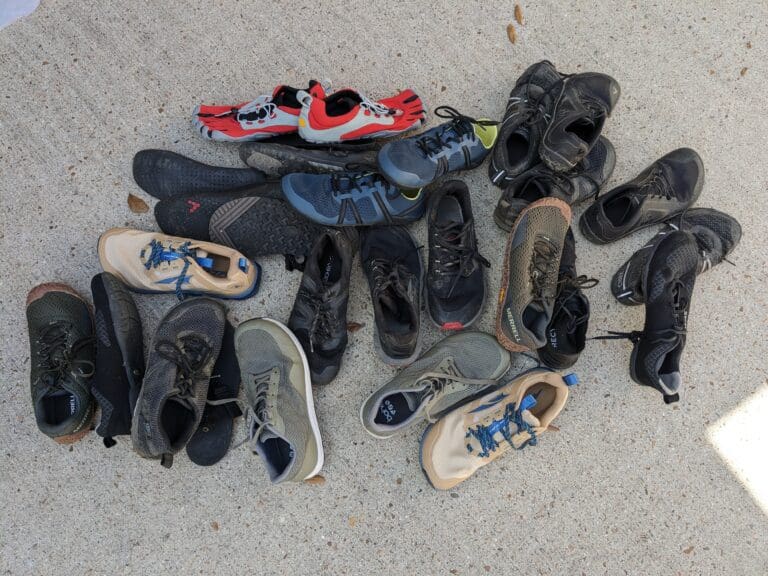
Wild and presumptuous shot here.. But have any recs for someone with the foot dimensions of approx 247mm long, 100 forefoot, 85ish midfoot (I’m not positive I measured the right spot here honestly..) and 65ish heel? I’ve been wearing men’s Xero HFS in 41s but am looking for something that will let me enjoy some road and easy trail running and light hiking as the seasons change (bonus for being able to wear them on slippery ground from water and/or ice). I also have a relatively average foot depth. I tried Vivo Primus Trail III in a women’s 40 after using Vivo’s foot scanner tool, and the upper crimped just at the widest part of my foot, so that was a no-go, but I’m now realizing maybe the men’s would be a possible option… Curious to try your suggestions! (I have various barefoot shoes in other brands/models, but for running have so far only used the Xeros and some running sandals in the summer)
Hey! First, yeah midfoot sizing is tricky to gauge, but thanks for the measurements, that helps.
If the HFS fits your foot well, I can see why the Primus Trail was uncomfortable, it’s tapered aggressively around the midfoot. That can be positive for some, and for trail running where you want an optimized lockdown, but if you’re looking for comfort that’ll be a problem. If the HFS worked for you, I’d suggestion the Mesa Trail II. It’s the perfect trail companion for the HFS. Fits very similar, and has just a little more protection and a grippy sole for gentle trails. I’m 95% sure that’ll work for you in a similar sizing in the mens option.
I hope that helps!